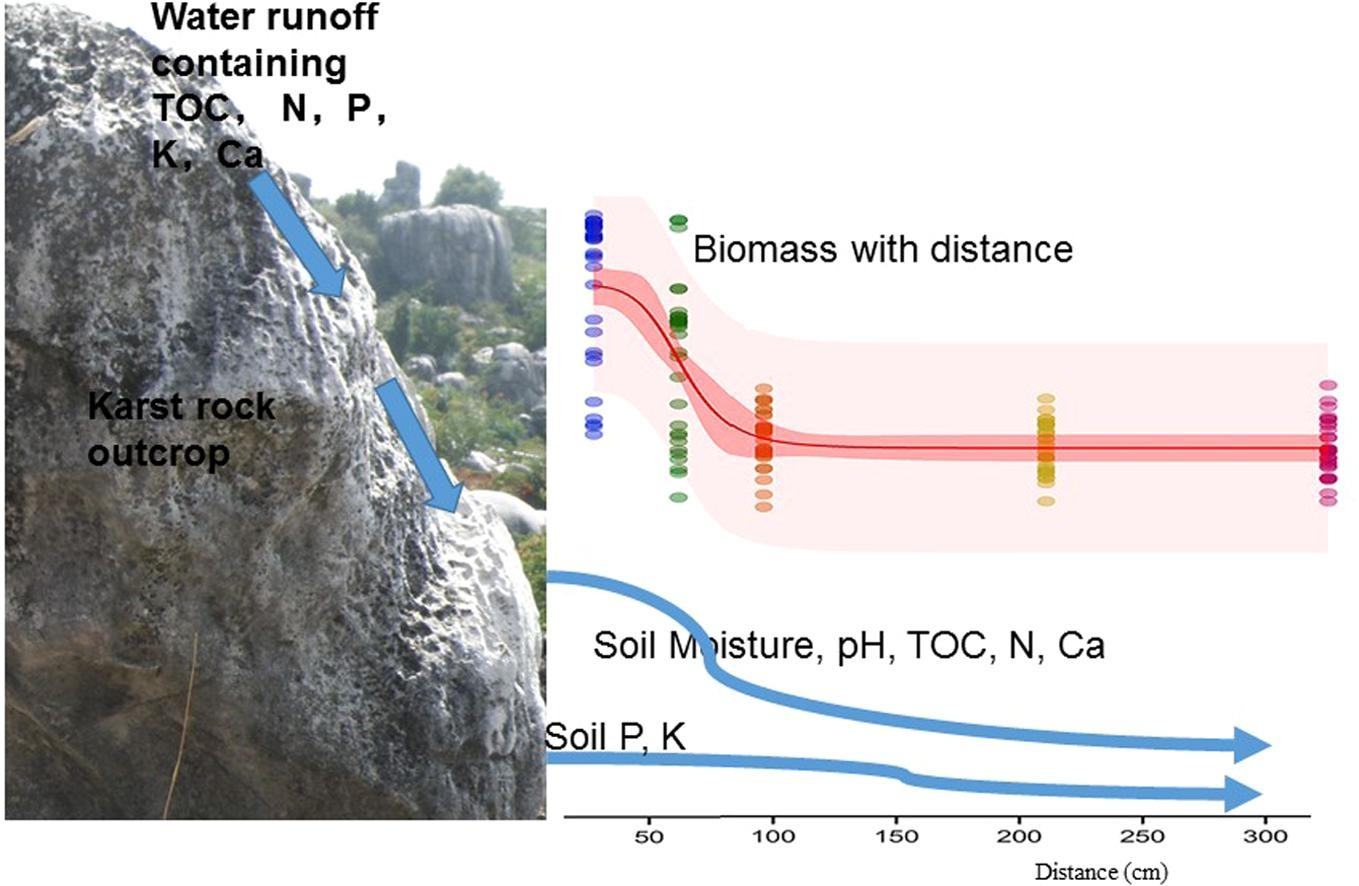Rock outcrops (ROCs), which occur either as exposed parts of the bedrock or as isolated blocks, are very common structures associated with patches of soil and plant communities in terrestrial ecosystems, especially in karst-dominated landscapes. They have various edge effects on the karst plant matrix via the export of water and nutrients from runoff.
In a study published in Catena, researchers from Xishuangbanna Tropical Botanical Garden (XTBG) suggest that karst ROCs affect the physical and chemical parameters of soil and adjacent plant biomass significantly on fine scales, and these effects are correlated with the size parameters associated with ROCs, such as coverage area.
The researchers selected 30 isolated ROCs randomly from semi-humid karst grasslands in SW China. They collected rainwater (from rainfall) and ROC runoff for chemical analysis. They then determined the soil parameters and aboveground and belowground plant biomass (AGB and BGB, respectively) of plants at 0–30, 31–60, 61–90, 91–190, and 191–290 cm intervals, adjacent to the ROC rock–soil interface.
They found that some of the soil physical and chemical parameters were higher in the 0–30 cm sample plots than that in the other plots located farther away from the ROC. The plant AGB and BGB were higher in the 0–30 cm and 31–60 cm plots and correlated with the size parameters of ROCs. The results imply that ROCs influenced adjacent soils and plant growth within a certain range of the karst rock–soil interface.
“Our findings provide a foundation for understanding the complexity of planting matrices, and provide cues for seedling planting strategies used in restoration practices,” said SHEN Youxin of XTBG.
Contact
SHEN Youxin Ph.D
Key Laboratory of Tropical Forest Ecology, Xishuangbanna Tropical Botanical Garden, Chinese Academy of Sciences, Mengla, Yunnan 666303, China
E-mail: yxshen@xtbg.ac.cn

Fine-scale effect of karst rock outcrops on adjacent soil and plant communities in Yunnan. (Image by SHEN Youxin)

